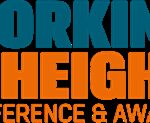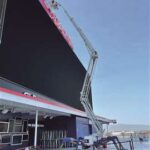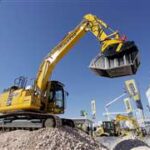So you need a boom lift. Easy, right?
Until someone asks:
“Do you want a straight boom or an articulating boom?”
Cue the blank stare.
They both lift people. They both go up high. They both look like robotic arms from a Transformers movie. So what’s the difference—and how do you pick the right one?
Let’s make it simple.
🏗️ First: What Are They?
🔹 Straight Boom (Telescopic Boom)
A straight boom is like a giant extendable selfie stick.
It reaches far in one straight line, like a sniper rifle for height.
Best for:
-
Max horizontal reach
-
Big open job sites
-
Fast up/down movement
🔸 Articulating Boom (Knuckle Boom)
An articulating boom bends like an elbow. Or two. Or three.
It goes up, over, around, and between obstacles.
Best for:
-
Tight spaces
-
Work around or behind objects
-
Complex environments (trees, pipes, roofs)
📊 Quick Comparison
| Feature | Straight Boom | Articulating Boom |
|---|---|---|
| Reach direction | Straight, long-range | Up, over, around |
| Obstacle navigation | Limited | Excellent |
| Horizontal outreach | Greater | Moderate |
| Platform height | Often higher | Typically shorter |
| Job site type | Wide open, outdoors | Confined, cluttered, indoor/outdoor |
| Speed of deployment | Faster | Slightly slower |
| Versatility | Lower | Higher |
🏞️ Real Job Site Scenarios
📦 Warehouse Light Fixture Install
-
High ceiling
-
Open floor
✅ Straight boom wins: get up fast, no obstacles.
🏗️ Construction Site with Scaffolding Everywhere
-
Need to get over rebar and beams
✅ Articulating boom threads the needle and gets the job done.
🌳 Tree Trimming
-
Need to reach over and into dense canopy
✅ You guessed it—articulating boom.
🛠️ Stadium Roof Repair
-
Wide open space, very high point of access
✅ Straight boom shines with its insane outreach.
📐 Numbers That Matter
Some straight booms (like the Genie SX-135 XC) can extend over 90 feet horizontally and reach 180 ft up.
Articulating booms usually cap out at 75-85 ft platform height, but make up for it with amazing flexibility.
The message?
Straight boom = long game
Articulating boom = smart angles
🔋 Power & Terrain
Both types come in:
-
Diesel (great for outdoors, longer runtime)
-
Electric (ideal for indoors, quiet, zero-emission)
But articulating booms are often favored indoors or in hybrid-use facilities, where compactness and maneuverability are king.
💰 What About Cost?
Generally:
-
Straight booms cost more (longer reach = higher price tag)
-
Articulating booms are more affordable, especially for mid-height indoor work
But always base your decision on:
-
The height you need
-
The obstacles in your way
-
The surface you’re working on
🧠 Still Not Sure?
Ask yourself these questions:
-
Do I need to go around or go through?
-
Is there a lot of stuff in the way (pipes, beams, trees)?
-
Am I working indoors, outdoors, or both?
-
Do I need to go way out horizontally?
If you answer “yes” to tight spaces or obstacles → Articulating boom
If you just need height and distance → Straight boom
🏁 Final Verdict
It’s not about which boom lift is “better.”
It’s about which boom lift is better for your job.
-
Straight boom = reach farther, faster
-
Articulating boom = move smarter, bend better
Choose the one that fits your worksite—not just your toolbox.
Because when you’re 60 feet in the air, with a wrench in hand and a deadline on your back, you’ll be glad you picked the right arm to lift you up.




